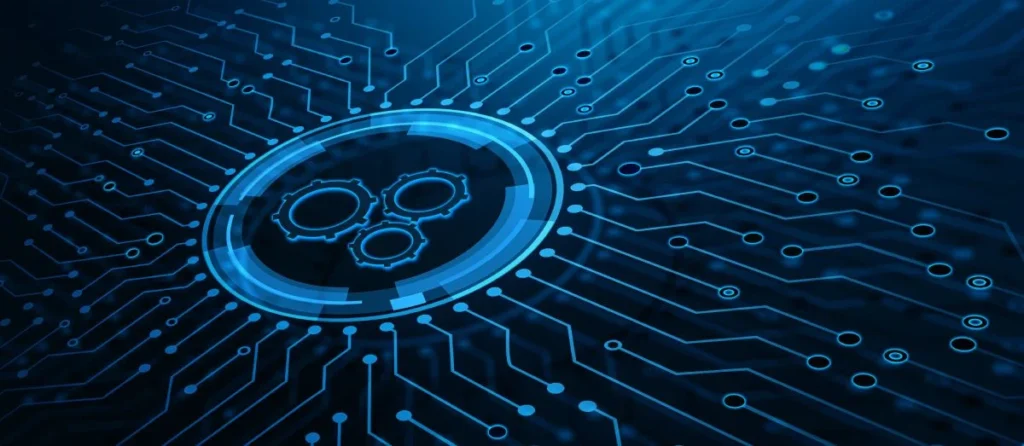Outdated IT isn’t a new problem—it’s the inevitable outcome of time and talent pushing forward, even at the government level.
The conversation is especially prescient in 2022, in part because so many people are still working from home, often on their own equipment. As a result, employees try to access legacy systems from a range of devices (PCs, Macs, iPads) the systems weren’t created to accommodate. Their inability to connect and collaborate on important work using legacy systems is just one roadblock among many. In tandem with the host of challenges outdated IT presents, our hybrid workforce is heightening the urgency for legacy system integration, a process that connects legacy systems with newer technologies.
If you’re considering legacy system integration but are unsure about when or how to make it happen, read on.
Legacy System Integration: 3 Key Questions
To begin, you’ll want to understand: (1) what characterizes legacy systems, (2) why businesses maintain legacy systems, and (3) when it’s the right time to spearhead legacy system integration.
What are legacy systems?
Although definitions vary, a legacy system is basically any tool, software, or system that has outlived its novelty. This technology may be outdated in terms of security or scalability, or it may be that knowledge about the system is no longer widely available. Referring to something as a legacy system often indicates that both the technology itself and the community that can support the system are fading.
Looking to explore legacy system integration for your business?
Schedule a free, personalized demo to see how Nividous can bring your operations up to speed.
Why do businesses maintain legacy systems?
Cumbersome, outdated systems pose problems because they are often challenging to update, integrate, or stop using. Why?
- Legacy systems are mission-critical. Very often, legacy systems were designed or purchased to manage core business functions—functions a company simply can’t afford to do without, even for a short period of time.
- Historical knowledge is absent. It’s challenging to replace, interface with, or even set up a new UI for legacy systems because the expertise no longer exists to do so. Plus, integration could involve, for example, the custom development of a modern system to perform similar functionality as well as access the data stored in a legacy system—an expensive and time-consuming prospect.
- Old (or non-existent) APIs create hurdles. Among legacy systems, APIs can be limited, completely lacking, or originally designed to do things (like share specific data) that no longer have value. API integrations may require time and IT resources companies just don’t have.
When is it time to integrate a legacy system?
Businesses should integrate older systems when it’s financially beneficial (or imperative) to do so. For some companies, that moment could be now; for others, it could be years down the line.
Often, this inflection point will come when manual processes (for example, employees moving numbers from a database to a spreadsheet) are costing the company an unsustainable amount of time or creating other gross inefficiencies that endanger the bottom line. Or perhaps a company can no longer attract or retain new talent because the UI on its legacy system(s) is so clearly out-of-date or cumbersome to use.
How To Integrate Legacy Systems (Without Using An API)
Luckily, for organizations that are ready to take on their legacy systems or anticipate they will be soon, robotic process automation (RPA) is an excellent solution.
Put simply, an RPA bot can capture any data a business can see on their screen, and make it accessible within any other system, without requiring API integration.
Say there is a set of data rules a business relies on regularly—a calculation done in a legacy system that takes 15 different values from 15 different databases and combines them in a certain way. The end user sees the outcomes on their screen and wants to integrate them with a newer system, but no one in the organization knows how the original system calculates the values. RPA bots can gather the data output and make it available without requiring a business to know anything about the legacy system that produces the original results.
RPA can also connect multiple systems together to streamline data management and improve efficiency. In one case, before implementing RPA, professionals at Edelweiss, a private wealth management firm, were creating financial reports using a combination of legacy systems, multiple external websites, and emails. After implementing the Nividous automation platform, the company was able to reduce its report generation time by 70%.
In another example, a leading eyecare group improved claim payment cycle efficiency by 80% through automation—specifically, the team implemented an RPA bot to retrieve claim details from a legacy system, and then verify and submit them.
Whether you’re looking to address gaps created by your legacy system from a functionality standpoint or trying to adopt a new technology that can access legacy system data, Nividous RPA bots can help.
Break through legacy system stagnation with Nividous Platform
Get a trained Nividous RPA bot, at no risk, in 3-4 weeks with our Quick Start Program.
